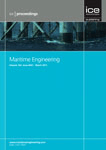
PROCEEDINGS OF THE INSTITUTION OF CIVIL ENGINEERS-MARITIME ENGINEERING
Scope & Guideline
Navigating the Future of Maritime Engineering.
Introduction
Aims and Scopes
- Maritime Structural Engineering:
Research related to the design, analysis, and performance evaluation of marine structures such as jetties, breakwaters, and offshore platforms. - Coastal Engineering and Management:
Studies that focus on coastal processes, including wave dynamics, scour development, and erosion mitigation, with a view towards sustainable coastal management. - Offshore Renewable Energy Infrastructure:
Exploration of the design and operational efficiency of structures associated with offshore wind farms and other renewable energy systems. - Safety and Risk Assessment in Maritime Operations:
Development of models and methodologies to assess risks and enhance the safety of maritime operations, including work safety in ports and offshore facilities. - Innovative Materials and Technologies:
Research into new materials and construction techniques that improve the durability and reliability of marine infrastructure.
Trending and Emerging
- Sustainability and Coastal Greening:
Increasing emphasis on integrating green infrastructure into coastal engineering to combat climate change and enhance ecosystem resilience. - Dynamic Response Analysis of Offshore Structures:
A surge in research on the dynamic behavior of offshore structures under various environmental loads, reflecting the growing complexity of marine engineering challenges. - Technological Integration in Maritime Operations:
Emergence of studies focused on the application of advanced technologies, such as computational modeling and AI, to improve the operational efficiency of maritime structures. - Impact of Climate Change on Coastal Systems:
Growing awareness and research on the effects of sea level rise and climate change on coastal dynamics and infrastructure, emphasizing the need for adaptive engineering solutions. - Safety Innovations in Maritime Engineering:
A notable trend towards developing innovative safety assessments and risk management frameworks for maritime operations and infrastructure.
Declining or Waning
- Traditional Maritime Construction Techniques:
There is a noticeable decrease in studies centered around conventional construction methods, as the field shifts towards more innovative and sustainable practices. - General Hydro-morphodynamic Modelling:
Papers specifically focused on basic hydro-morphodynamic modeling techniques are less frequent, indicating a trend towards more complex and integrated modeling approaches. - Historical Preservation of Maritime Structures:
Research on the heritage and refurbishment of historical structures seems to be waning, as contemporary issues in sustainability and innovation take precedence.
Similar Journals

International Journal of Maritime Engineering
Connecting Researchers, Professionals, and Students in Maritime EngineeringThe International Journal of Maritime Engineering (ISSN: 1479-8751, E-ISSN: 1740-0716), published by UNIV BUCKINGHAM PRESS in the United Kingdom, is a vital resource for the maritime engineering community, addressing pressing issues in both Environmental Engineering and Ocean Engineering. Established in 2006, this journal serves as a platform for disseminating innovative research, technological advancements, and practical solutions that enhance the sustainability and efficiency of maritime operations. With its current classification in the Q3 quartile for both fields in 2023, it offers valuable insights to researchers, professionals, and students who seek to bridge theoretical knowledge with industry applications. Though the journal does not operate under an open access model, it remains an essential reference for academic discourse and advancement in maritime studies through its rigorous peer-review process and high-level research outputs.

JOURNAL OF WATERWAY PORT COASTAL AND OCEAN ENGINEERING
Exploring the Depths of Coastal and Ocean EngineeringThe JOURNAL OF WATERWAY PORT COASTAL AND OCEAN ENGINEERING, published by the ASCE - American Society of Civil Engineers, is a premier scholarly journal devoted to the interdisciplinary fields of waterway, port, coastal, and ocean engineering. Since its inception in 1982, the journal has provided a crucial platform for researchers, professionals, and students to share innovative findings and advancements related to the engineering and management of aquatic environments. With an impressive Q2 ranking in multiple categories, including Civil and Structural Engineering, Ocean Engineering, and Water Science and Technology, the journal is recognized for its significant contributions to the field. It seeks to publish high-quality research that addresses both theoretical and practical challenges while promoting sustainable practices in marine and coastal systems. Holding a prominent Scopus rank and providing access to a global readership, the journal stands as an invaluable resource for those dedicated to advancing the science and engineering of water environments.
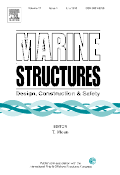
MARINE STRUCTURES
Advancing Knowledge in Ocean EngineeringMARINE STRUCTURES, published by Elsevier Science Ltd, is a premier scholarly journal that has established itself as an essential platform for the dissemination of cutting-edge research in the fields of Marine Engineering, Ocean Engineering, and Materials Science. With an impressive H-index reflecting its substantial citation impact, and boasting a Q1 ranking across several categories including Materials Science and Mechanical Engineering as of 2023, this journal is recognized globally for its contributions to advancing knowledge and innovation in marine structures. The journal covers a wide range of topics, from the design and analysis of marine structures to the latest technologies and methodologies in ocean engineering, making it invaluable for researchers, professionals, and students alike. As the journal continues to publish high-quality articles that explore contemporary challenges and opportunities within the marine domain, it serves as a catalyst for collaboration and knowledge exchange among academia and industry. Researchers are encouraged to submit their original works and benefit from the rigorous peer-review process that ensures the quality and reliability of published content. MARINE STRUCTURES is not currently an open access journal, providing a subscription-based model that facilitates access to its authoritative body of knowledge.

Brodogradnja
Exploring Cutting-Edge Solutions for Marine ChallengesBrodogradnja is a distinguished open-access journal dedicated to the fields of Mechanical Engineering and Naval Architecture, published by the University of Zagreb's Faculty of Mechanical Engineering & Naval Architecture. Since its launch, the journal has been at the forefront of disseminating valuable research and advancements in engineering design, marine technology, and shipbuilding practices, contributing significantly to both academic literature and industrial applications. With an impressive Q1 ranking in Mechanical Engineering and a Q2 ranking in Ocean Engineering for 2023, it stands as a pivotal resource for researchers, professionals, and students alike. Moreover, the journal's commitment to open access since 2005 ensures that cutting-edge research is accessible to a global audience, facilitating collaboration and knowledge-sharing among experts in the field. Based in Croatia, Brodogradnja continues to uphold the legacy of high-quality technical scholarship and innovation, making it an essential platform for advancing marine engineering and related disciplines.

CHINA OCEAN ENGINEERING
Pioneering Research at the Intersection of Ocean and EngineeringCHINA OCEAN ENGINEERING, published by SPRINGER MEDIZIN VERLAG GmBH, is a prominent journal in the fields of Mechanical Engineering, Ocean Engineering, and associated environmental sciences. With its ISSN 0890-5487 and E-ISSN 2191-8945, this journal caters to a broad audience engaged in research and development related to ocean systems and technologies. As evidenced by its Q2 ranking in Mechanical Engineering and Ocean Engineering, as well as its Q3 placement in Oceanography and Renewable Energy, Sustainability and the Environment for 2023, it provides a critical platform for disseminating innovative research and progressive ideas in these dynamic and interdisciplinary fields. The journal is committed to advancing the science of ocean engineering by focusing on sustainable practices and technological advancement, making it an essential resource for researchers, professionals, and students alike. With contributions from leading experts worldwide, CHINA OCEAN ENGINEERING is dedicated to exploring the multifaceted challenges and opportunities presented by our oceans.
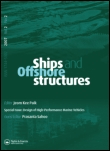
Ships and Offshore Structures
Advancing Innovation in Maritime Design and OperationsShips and Offshore Structures, published by Taylor & Francis Ltd, is a premier academic journal dedicated to advancing research in the fields of mechanical and ocean engineering. With an esteemed ISSN of 1744-5302 and an E-ISSN of 1754-212X, this journal has established a strong reputation, reflected in its Q2 ranking in both the Mechanical Engineering and Ocean Engineering categories, as well as its impressive Scopus rankings. The journal provides a platform for the publication of high-quality, peer-reviewed articles that address innovative design, construction, and operational challenges faced in the maritime and offshore industries. Although the journal does not currently offer open access, its accessibility through institutional subscriptions ensures that it remains a valuable resource for researchers, professionals, and students alike. By fostering interdisciplinary dialogue and disseminating cutting-edge research, Ships and Offshore Structures plays a crucial role in shaping the future of marine technology and engineering practices on a global scale.
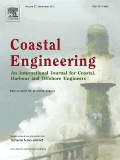
COASTAL ENGINEERING
Elevating Knowledge in Coastal and Ocean SciencesCOASTAL ENGINEERING is a prestigious journal published by Elsevier, focusing on the multidisciplinary fields of coastal and ocean engineering. With its ISSN 0378-3839 and E-ISSN 1872-7379, this journal has established a reputation for contributing high-quality research that addresses the dynamic challenges faced in coastal environments. Notably, it holds a remarkable Q1 ranking in both Environmental Engineering and Ocean Engineering categories, placing it in the top tier of academic journals with an impressive Scopus rank of #6 among 105 in Ocean Engineering and #28 among 197 in Environmental Science. The journal spans from its inception in 1973 to the present, with valuable insights that shape future developments in coastal management, sustainability, and engineering practices. Although it does not currently offer an Open Access option, its impact on advancing knowledge in the field is significant, making COASTAL ENGINEERING an essential resource for researchers, professionals, and students devoted to the preservation and enhancement of coastal and marine environments.
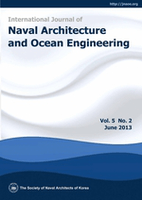
International Journal of Naval Architecture and Ocean Engineering
Shaping the waves of naval architecture with cutting-edge insights.International Journal of Naval Architecture and Ocean Engineering is a premier academic journal dedicated to advancing the fields of naval architecture and ocean engineering. Published by the SOC NAVAL ARCHITECTS KOREA, this Open Access journal has been a vital resource for researchers and industry professionals since its founding in 2009, providing unrestricted access to high-quality, peer-reviewed articles. With a notable Q2 ranking in both Control and Systems Engineering and Ocean Engineering, it ranks among the top journals in its category, offering valuable insights into emerging technologies and methodologies. The journal’s reputation is further highlighted by its Scopus rankings, positioning it within the top 30% of journals in Ocean Engineering and the top 31% in Control and Systems Engineering as of 2023. Based in the vibrant academic hub of Seoul, South Korea, the journal invites manuscripts that explore innovative solutions and critical research to address the challenges in naval and oceanic environments, contributing to the global dialogue on sustainable maritime practices.
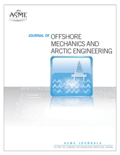
JOURNAL OF OFFSHORE MECHANICS AND ARCTIC ENGINEERING-TRANSACTIONS OF THE ASME
Bridging theory and practice in offshore mechanics.JOURNAL OF OFFSHORE MECHANICS AND ARCTIC ENGINEERING-TRANSACTIONS OF THE ASME (ISSN: 0892-7219; E-ISSN: 1528-896X) is a premier publication by the American Society of Mechanical Engineers (ASME), dedicated to advancing the field of offshore mechanics and Arctic engineering. Established in 1987 and running through 2025, this journal provides a crucial platform for researchers and practitioners to disseminate their findings in a rapidly evolving sector faced with unique challenges related to energy, ocean engineering, and mechanical engineering. With a notable impact reflected in its Scopus ranks—#224 in Mechanical Engineering and #39 in Ocean Engineering—the journal holds a significant position in the academic community, publishing high-quality peer-reviewed articles that span innovative technologies, safety, and environmental considerations in offshore and Arctic contexts. While currently not adopting an Open Access model, its strategic focus and rigorous standards make it an essential resource for students, professionals, and researchers passionate about expanding knowledge in these critical engineering domains.
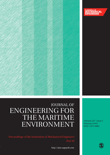
Proceedings of the Institution of Mechanical Engineers Part M-Journal of Engineering for the Maritime Environment
Elevating Engineering Standards for the Maritime EnvironmentProceedings of the Institution of Mechanical Engineers Part M - Journal of Engineering for the Maritime Environment, published by SAGE Publications Ltd, is a leading scholarly journal that addresses critical advancements in the field of maritime engineering. With an ISSN of 1475-0902 and an E-ISSN of 2041-3084, this journal serves as an essential platform for researchers and practitioners alike, disseminating original research, reviews, and case studies relevant to mechanical and ocean engineering. Recognized for its rigorous peer-review process, it currently holds a commendable Q2 ranking in both Mechanical Engineering and Ocean Engineering. The journal's reputation is bolstered by its strategic emphasis on innovative practices and sustainability in maritime environments. By providing a valuable resource for interdisciplinary collaboration, the journal facilitates the intersection of technology and engineering solutions critical for the evolving challenges within the maritime sector. Researchers, professionals, and students alike will find this journal instrumental in keeping abreast of the latest developments, best practices, and future directions in maritime engineering.